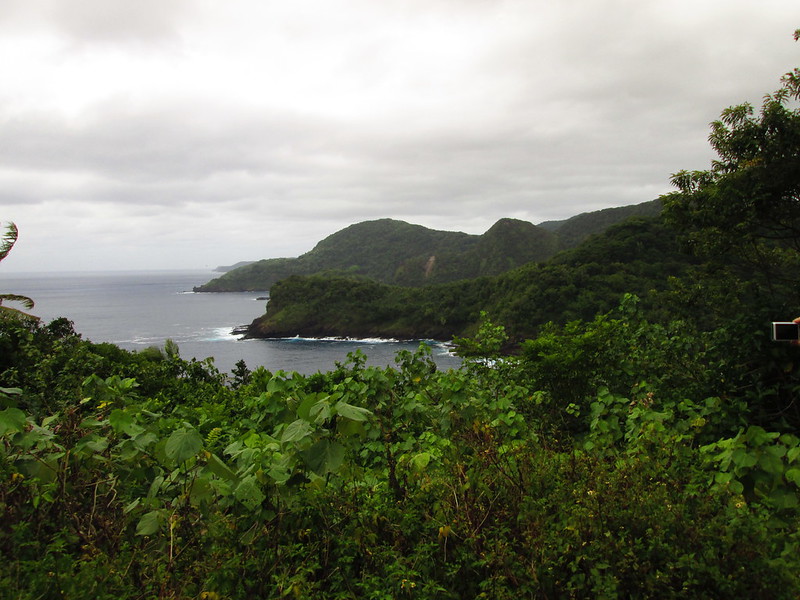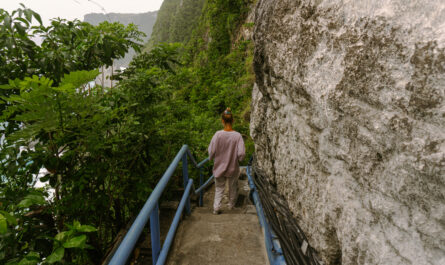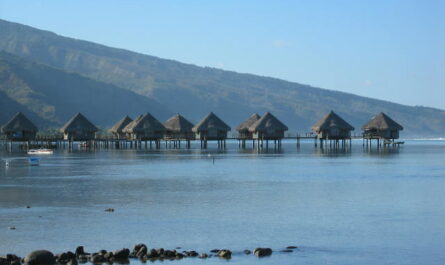Nestled in the heart of the South Pacific, the National Park of American Samoa is a hidden gem that offers a rare glimpse into pristine nature, vibrant Polynesian culture, and diverse ecosystems. Spanning across three islands—Tutuila, Ofu, and Ta‘ū—this unique park combines tropical rainforests, coral reefs, volcanic peaks, and traditional Samoan villages, making it a destination like no other.
The park’s unspoiled beauty, coupled with its cultural significance, creates an enriching experience for adventurers, nature lovers, and those seeking an off-the-beaten-path getaway. Here’s a comprehensive guide to exploring this extraordinary destination.
1. The Unique Geography of the National Park of American Samoa
The National Park of American Samoa is spread across approximately 13,500 acres, with about 4,000 acres of underwater marine habitat. Each of the three islands within the park offers unique landscapes and attractions:
- Tutuila: The largest and most accessible island, Tutuila boasts towering cliffs, lush rainforests, and dramatic coastal views. It is home to the park’s visitor center and several popular hiking trails.
- Ofu: Known for its idyllic beaches and vibrant coral reefs, Ofu is a snorkeling paradise. Its remoteness makes it a perfect destination for travelers seeking tranquility.
- Ta‘ū: The most isolated of the three islands, Ta‘ū features volcanic ridges and ancient cultural sites, offering a glimpse into the islands’ history and geological evolution.
This geographical diversity provides visitors with a wide range of experiences, from hiking through verdant rainforests to swimming among colorful coral reefs.
2. Biodiversity: A Haven for Flora and Fauna
The National Park of American Samoa is a sanctuary for rare and endangered species, many of which are found nowhere else on Earth. Its rich biodiversity is a testament to the park’s commitment to conservation.
Unique Wildlife
- Flying Foxes: These large fruit bats are among the park’s most iconic residents. Active during the day, they play a crucial role in pollinating the islands’ native plants.
- Birdlife: The park is home to numerous bird species, including the Samoan starling, wattled honeyeater, and white tern. Birdwatchers will find plenty to marvel at, particularly in the forested areas of Tutuila and Ta‘ū.
- Marine Life: The coral reefs surrounding the islands are teeming with life, including sea turtles, reef sharks, and hundreds of species of fish. The underwater ecosystems are a vibrant display of the Pacific’s marine biodiversity.
Flora
The park’s rainforests are a lush tapestry of native trees, ferns, and flowering plants. Mangroves, pandanus, and banyan trees are common, along with a variety of orchids and tropical flowers that add color to the landscape.
3. Cultural Significance: Embracing Fa’a Samoa
Unlike many national parks, the National Park of American Samoa includes villages and land leased from local communities. This unique arrangement allows the park to preserve not only the natural environment but also the traditional Samoan way of life, known as fa’a Samoa.
Living Culture
- Visitors can explore traditional Samoan villages, where residents maintain age-old practices such as weaving, tattooing, and preparing communal meals in outdoor earth ovens (umu).
- Hospitality is a cornerstone of Samoan culture. Visitors are welcomed with open arms and encouraged to learn about local customs and traditions.
Archaeological Sites
- The park protects several ancient archaeological sites, including stone platforms and pathways that were once part of Samoan settlements.
- These sites offer insights into the history of the islands and their early inhabitants.
4. Top Activities in the National Park of American Samoa
Hiking
The park’s trails offer stunning views and a chance to immerse yourself in its diverse landscapes. Some popular hikes include:
- Mount Alava Trail (Tutuila): This 6-mile round-trip trail takes you through lush rainforest to the summit of Mount Alava, where you’ll be rewarded with panoramic views of Pago Pago Harbor and the surrounding islands.
- Blunts Point Trail (Tutuila): A shorter hike that combines natural beauty with history, this trail leads to World War II-era gun emplacements overlooking the harbor.
- To’aga Trail (Ofu): A coastal trail that winds along the pristine beaches of Ofu, offering opportunities to spot marine life and enjoy the island’s unspoiled beauty.
Snorkeling and Diving
The coral reefs surrounding Ofu are among the most spectacular in the world. Crystal-clear waters provide excellent visibility, allowing snorkelers and divers to explore vibrant coral gardens and encounter a wide array of marine species.
Wildlife Watching
Whether it’s spotting flying foxes in the treetops, watching seabirds along the coast, or swimming alongside sea turtles, the park offers countless opportunities for wildlife enthusiasts.
5. Planning Your Visit
Getting There
The National Park of American Samoa is accessible by air, with flights from Hawaii to Pago Pago International Airport on Tutuila. From there, inter-island flights connect travelers to Ofu and Ta‘ū. Keep in mind that transportation between islands can be limited, so plan accordingly.
Best Time to Visit
The dry season (May to October) offers the best weather for outdoor activities, with cooler temperatures and lower humidity. However, the wet season (November to April) can also be rewarding, as the lush landscapes become even more vibrant.
Visitor Center
Start your journey at the park’s visitor center in Pago Pago, where you can pick up maps, learn about the park’s ecosystems, and get tips from knowledgeable staff.
6. Tips for a Memorable Visit
- Respect Local Customs: Always ask for permission before entering a village or taking photographs of residents. Dress modestly, particularly in villages, to show respect for local traditions.
- Pack Essentials: Bring sturdy hiking shoes, insect repellent, sunscreen, and plenty of water. For snorkeling, consider bringing your own gear, as rentals may not always be available.
- Prepare for Isolation: Some areas of the park are remote, with limited amenities. Be prepared for self-sufficiency, especially on Ofu and Ta‘ū.
7. Why Visit the National Park of American Samoa?
The National Park of American Samoa offers a rare combination of natural beauty and cultural immersion. Unlike more heavily trafficked parks, it remains relatively untouched, providing an authentic experience for those willing to venture off the beaten path. Whether you’re exploring rainforests, snorkeling vibrant reefs, or learning about Samoan culture, this park promises a journey of discovery and connection.
Conclusion: Nature and Culture in Harmony
Visiting the National Park of American Samoa is an opportunity to step into a world where nature and culture exist in perfect harmony. The park’s unspoiled landscapes, rich biodiversity, and vibrant Samoan traditions make it a destination unlike any other. For travelers seeking an authentic and enriching experience, this national park is a true paradise waiting to be explored.
Pack your bags, embrace the spirit of adventure, and prepare to be captivated by the wonders of the National Park of American Samoa.



